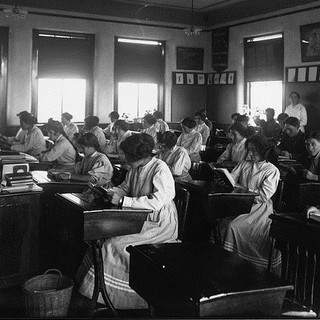
If you've been following the progression of the Faculty Development efforts at Creating the Future, you know that we started by asking high potential questions – what would success look like? From there, we established the pre-conditions for success – what must instructors be and have in order to achieve those outcomes? (For prior posts in this thread, click through the posts in our "Faculty Development" thread here.)
At our last meeting, we moved from identifying the qualities and proficiencies we hope to see in our faculty members to how those qualities could be evidenced. The discussions continue to be thoughtful, thought-provoking and truly indicative of how the values and culture of Creating the Future can be applied to practical decisions.
How would we know if faculty candidates meet the Goals?
How would we identify those who had Care and Love for Self and Others? Those who care for themselves would be able to explain how they achieved a balance of professional development, work and fun. They would employ constructive outlets such as meditation and controlled breathing to bring themselves back to centre, and would know what boundaries they needed to set on interactions to keep themselves balanced. They would know their own triggers, and have support people who can see when they need help.
In a learning situation, we would expect them to demonstrate care for others by helping the group create a safe space for learning. They would show respect for everyone in the room, and encourage people from wherever they are in their learning. They would demonstrate genuine curiosity by asking questions to further their understanding.
The second goal was candidates who could Link the Being to the Doing – The Way and the Practical. We would expect candidates to have examples that showed they had taken accountability for achieving learning outcomes. They tell concise personal stories that demonstrated key points and reflected on how their world had been changed by the actions of others and by relationships. They make space for others to tell their stories safely. They would ask great questions, but also have a tolerance for silence. They trust the wisdom in the room and not need to have all the answers. They are comfortable with ambiguity, and make time for relationships and reflections. They are good readers of body language and tone. They would have practical experience outside of classrooms.
Finally, we talked about how to know if candidates could Accomplish Learning Outcomes. Candidates have experience defining learning outcomes and seeking feedback and evaluations. On receiving constructive criticism, they figure out what it means and would apply it. They have experience in using Creating the Future Principles in the field and in teaching or training, and can explain how they had been effective. They have a comfort level with adapting to meet the learners where they are, and with continuous assessments to enable mid-course corrections. They come across as guides, not stars, who would help others be stars and shine.
We know very well we are describing the ideal, and that the faculty members will be chosen from the real world, not gods and goddesses!
How will we know if faculty members are successful?
We want to make the success measures, and methods of evaluation, clear up-front. At our last meeting, we came up with:
-
Participants stay engaged with Creating the Future
-
Participants take other Creating the Future professional development
-
Creating the Future receives good solicited and unsolicited feedback
-
We will seek participant feedback with questions such as:
-
What the instructor authentic?
-
Did their stories help engage you in Creating the Future thinking?
-
Did they model what Creating the Future stands for – consciously Walk the Talk? – Did you see them living out the practice?
-
Did they share new stories about how their teaching changed their practice?
-
Did they engage the audience right from the start?
-
What’s Next?
We need to step sideways and spend some time on process and logistics. What is our critical path to have faculty on board by fall for flash classes and webinars, and by year-end for immersion classes? How many people do we need for the initial roster, based on how many and what type of sessions may be delivered? How do we see team curriculum development happening?
And it’s time to talk about recruitment. What will the application process be? What about the screening process? The decision process?
We made a tiny start on May 31st on this. We will very deliberately use Creating the Future language to both attract and weed out. Potential faculty will be expected to tell stories that demonstrate desired qualities and proficiencies. Members of the Faculty Program Development group remain eligible to become faculty, so we have to take that into account in process development.
Soon after, we’ll talk about how to bring the first faculty members on board. What support will they need at the start, and how can we ensure continuous support? And while some sessions are already designed and being delivered, how will team curriculum development happen in future?
Are you getting excited yet? We are. You can watch the last meeting here. Our next meeting will be on Friday June 14th at 4:00 pm Eastern Time. Subscribe and watch for the blog post at our Walking the Talk blog and join in the conversation there!
